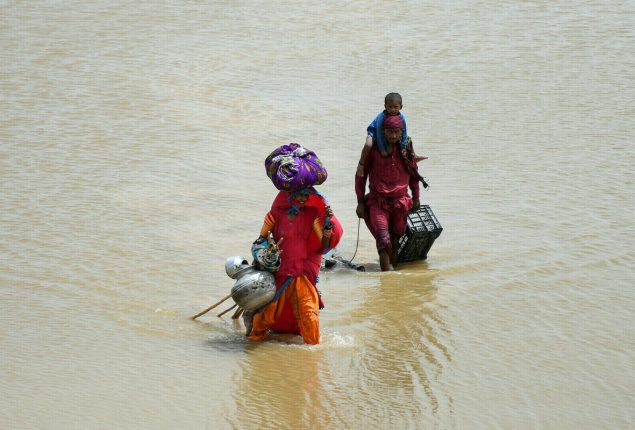US Approves Release of Iranian Funds for Detainees
Americans under house arrest until funds move to Qatar. Blinken signs waiver...

Climate Threats Put $65 Billion in Asian Apparel Exports at Risk
A joint study by Schroders and Cornell University has revealed that extreme heat and flooding could result in a loss of $65 billion in apparel export earnings by 2030 for four Asian countries. Workers in these countries are grappling with high temperatures, leading to concerns about factory closures.
The research also delved into the supply chains of six undisclosed global apparel brands operating in Bangladesh, Cambodia, Pakistan, and Vietnam. It indicated that all six brands would face material impacts, potentially amounting to five percent of their annual group operating profits.
The study’s findings are expected to serve as a wakeup call to the apparel industry, which is facing substantial financial risks due to climate-related issues. Additionally, it highlights the lack of transparency in disclosing companies’ exposures to such risks.
According to Jason Judd, the Executive Director of Cornell Global Labor Institute, the apparel industry’s climate response primarily focuses on mitigation, emissions reduction, and recycling, with limited attention given to challenges posed by heat and flooding.
Understanding the physical risks posed by climate change is crucial, but currently, there is insufficient data, and many companies do not disclose enough information about their exposure to these risks. Schroders plans to engage more with companies on their disclosures and calls for collaboration between businesses, suppliers, and policymakers to develop adaptation strategies that consider the impact on workers.
The study used projections to analyze future heat and flooding levels under a “climate adaptive” scenario and a “high heat and flooding” scenario. The latter scenario would lead to increased heat stress among workers, causing a decline in productivity as heat and humidity levels rise.
Overall, the research predicts a $65 billion earnings shortfall between 2025 and 2030, equivalent to a 22 percent decline in earnings, along with the loss of 950,000 jobs. By 2050, the study suggests a 68.6 percent reduction in export earnings and 8.64 million fewer jobs due to the combined impact of heat and flooding in these countries.
Catch all the International News, Breaking News Event and Latest News Updates on The BOL News
Download The BOL News App to get the Daily News Update & Follow us on Google News.